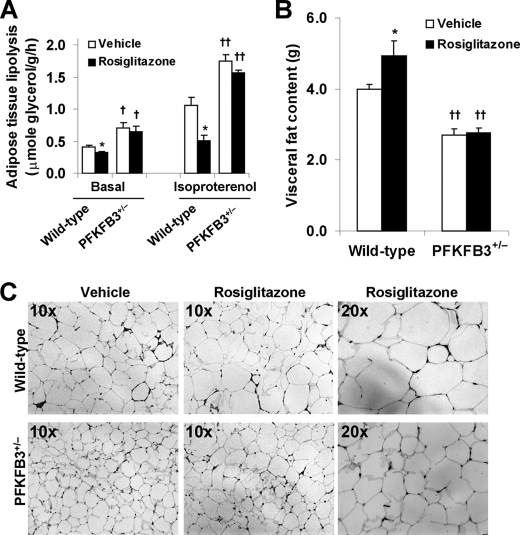FIGURE 3.
Disruption of PFKFB3/iPFK2 lessens the effect of PPARγ activation on increasing adipose tissue fat storage. At the age of 5–6 weeks, male PFKFB3+/− mice and wild-type littermates were fed an HFD for 12 weeks and treated with rosiglitazone (10 mg/kg/day) or vehicle (PBS) during the last 4 weeks of HFD feeding. At the end of the feeding/treatment regimen, mice were fasted for 4 h before collection of tissue samples. For A and B, data are means ± S.E. (error bars), n = 6. *, p < 0.05 rosiglitazone versus vehicle within the same genotype (in A and B) in the presence of the same condition (in A, basal or isoproterenol). †, p < 0.05; ††, p < 0.01, PFKFB3+/− versus wild type with the same treatment (in A and B, rosiglitazone or vehicle) in the presence of the same condition (in A, basal or isoproterenol). A, the rates of adipose tissue lipolysis were measured under both basal and isoproterenol-stimulated conditions. B, visceral fat content was estimated from the sum of epididymal, mesenteric, and perinephric fat mass. C, adipose tissue histology. The sections of epididymal fat pad were stained with hematoxylin and eosin.

